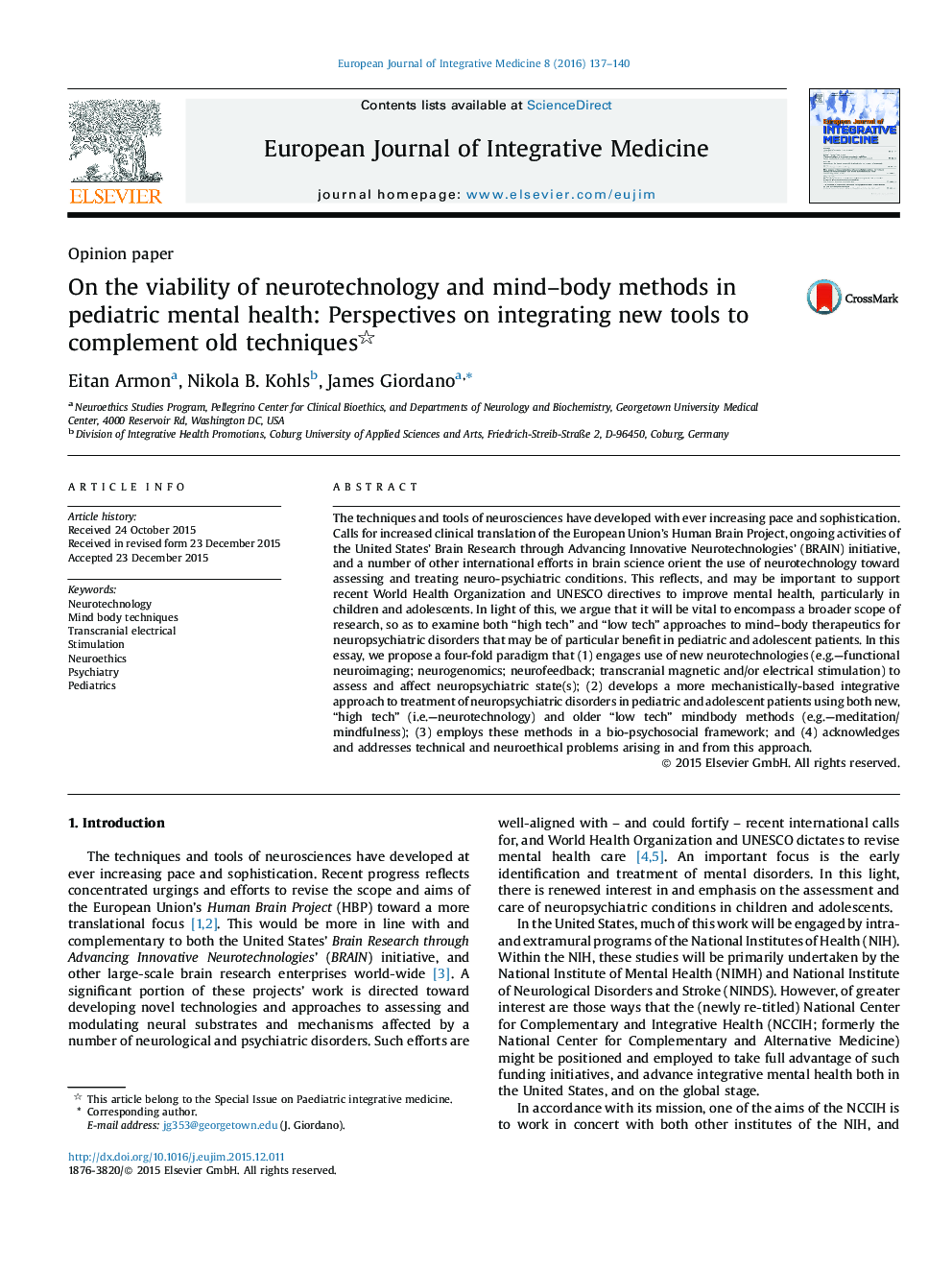| Article ID | Journal | Published Year | Pages | File Type |
|---|---|---|---|---|
| 2479651 | European Journal of Integrative Medicine | 2016 | 4 Pages |
The techniques and tools of neurosciences have developed with ever increasing pace and sophistication. Calls for increased clinical translation of the European Union’s Human Brain Project, ongoing activities of the United States’ Brain Research through Advancing Innovative Neurotechnologies’ (BRAIN) initiative, and a number of other international efforts in brain science orient the use of neurotechnology toward assessing and treating neuro-psychiatric conditions. This reflects, and may be important to support recent World Health Organization and UNESCO directives to improve mental health, particularly in children and adolescents. In light of this, we argue that it will be vital to encompass a broader scope of research, so as to examine both “high tech” and “low tech” approaches to mind–body therapeutics for neuropsychiatric disorders that may be of particular benefit in pediatric and adolescent patients. In this essay, we propose a four-fold paradigm that (1) engages use of new neurotechnologies (e.g.—functional neuroimaging; neurogenomics; neurofeedback; transcranial magnetic and/or electrical stimulation) to assess and affect neuropsychiatric state(s); (2) develops a more mechanistically-based integrative approach to treatment of neuropsychiatric disorders in pediatric and adolescent patients using both new, “high tech” (i.e.—neurotechnology) and older “low tech” mindbody methods (e.g.—meditation/mindfulness); (3) employs these methods in a bio-psychosocial framework; and (4) acknowledges and addresses technical and neuroethical problems arising in and from this approach.
